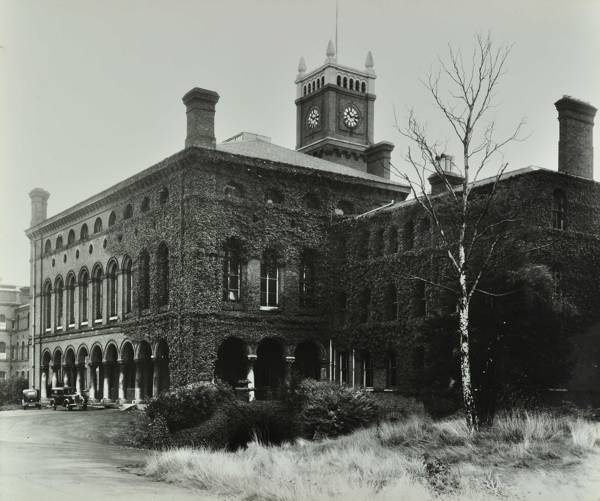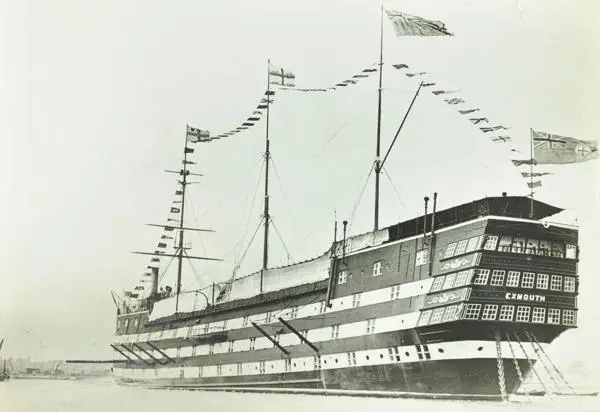Charlie Chaplin
Reflections of a Victorian childhood: Charlie Chaplin’s The Kid
Charlie Chaplin's silent comedy-drama The Kid was released 100 years ago in 1921. His first feature-length film as a director tells the story of a boy abandoned at birth by his unmarried and desperate mother. Found by The Tramp (played by Chaplin) the child is raised with love and care in the poverty of an American slum. The film’s characters suffer poverty, illness, unemployment and live under the threat of intervention by the authorities. The compassion shown to these characters and the authenticity of these depictions can be traced to Chaplin’s own impoverished childhood in Victorian London. Stephanie Slight traces Chaplin’s journey from embarrassed workhouse boy to Hollywood icon in records held at LMA.
Born in 1889 in Walworth, South London, Charles Spencer Chaplin lived comfortably for the first few years of his life. His parents were both theatre performers who separated shortly after his birth. Charlie and his elder half-brother Sydney were raised by his mother Hannah, a successful stage artist. When she began to lose her voice, Hannah was unable to find enough work to support her young family and was forced to turn to her local workhouse for support.
Inmate registers held at LMA record that Charlie and Sydney were first admitted to Newington Workhouse, Southwark, in May 1896 (LMA, SOBG/111/035). Although admission to the workhouse was voluntary, it would have been a difficult decision for Hannah to make and an intimidating experience for the brothers. On entry to a workhouse, families were usually placed in a receiving ward and checked by the workhouse Medical Officer to determine their health and to identify any infectious diseases. Inmates would then be washed and issued with workhouse uniform. Recalling entering Lambeth Workhouse at a later date, then along with their mother, Charlie wrote in his autobiography:
"Although we were aware of the shame of going to the workhouse, when Mother told us about it both Sydney and I thought it adventurous and a change from living in one stuffy room. But on that doleful day I didn’t realize what was happening until we actually entered the workhouse gate. Then the forlorn bewilderment of it struck me; for there we were made to separate, Mother going in one direction to the women’s ward and we in another to the children’s."
Charlie Chaplin - 'My Autobiography', p26
This painful separation is echoed in The Kid, when, after five years of living together, the boy is taken into care by orphanage officials. The Tramp attempts a dramatic rescue of the boy across rooftops while the boy desperately tries to beat off the officers with a hammer.
Workhouses often separated children from their parents and sent them for care and education to residential schools in the countryside. In London, the Central London District Schools accommodated children from many of London’s workhouses, including Hanwell Residential School to which Charlie and Sydney Chaplin were transferred just a few weeks after entering Newington Workhouse. Pupil registers from Hanwell Residential School show Charlie, aged seven, and Sydney, aged 11, admitted together on 18 June 1896 (LMA, CLSD/224).
As infants and older boys slept in separate blocks, the brothers saw little of each other, although, in his autobiography, Chaplin recalled being smuggled buttered bread rolls by Sydney who worked in the school kitchen (My Autobiography, p31). Hanwell schooled children in literacy and numeracy with a focus on exercise and discipline. Boys received technical training and were taught to play musical instruments with many going on to join the Army.
"Although at Hanwell we were well looked after, it was a forlorn existence. Sadness was in the air; it was in those country lanes we walked, a hundred of us two abreast. How I disliked those walks, and the villages through which we passed, the locals staring at us! We were known as inmates of the ‘booby hatch’, a slang word for workhouse."
Charlie Chaplin - 'My Autobiography', p29

Charlie remained at Hanwell school until January 1898 but Sydney, being four years older, joined the Training Ship Exmouth just five months after arriving at Hanwell (LMA, MAB/2512/6138). TS Exmouth, moored at Grays, Essex was used to train boys from London workhouses and Poor Law schools for the Royal Navy and merchant navy. Alongside regular schoolwork, they learnt sailing, rowing, ropemaking and signalling.
After Charlie left Hanwell and Sydney left TS Exmouth, they joined their mother who had left the workhouse and was able to support her family again. This is echoed in The Kid, where the boy is eventually reunited with his mother, now a successful and wealthy opera singer. Sadly, due to a lack of financial support from Charlie’s father, and Hannah’s difficulty in finding work, they soon had no option but to turn to their local workhouse again after just six months of independence. The family went into Lambeth workhouse and registers show that Charlie and Sydney were sent from there to Norwood Residential School for just a few months until they received news that their mother had been admitted to an infirmary on the grounds that she was thought to be insane (LMA, LABG/203/001 & LABG/167/022). Reception orders from Lambeth Infirmary show that Hannah Chaplin was assessed as 'noisy and incoherent…talking to imaginary people' before being transferred to Cane Hill Asylum in Croydon (LMA, LABG/154/011). Hannah remained at Cane Hill while Charlie started getting more theatrical work and began to tour with dance troupes; beginning his journey to international stardom. Later in life, Hannah joined Charlie in America to be cared for until her death in 1928.
Records from Borough Market Trustees show that even at the height of his Hollywood fame, Chaplin remembered his South London roots. Photographs, newspaper clippings and telegrams reveal that well into the 1930s, Chaplin sent signed photographs, money for prizes and transatlantic telegrams for the winners of Charlie Chaplin lookalike competitions entered into by porters at Borough Market in Southwark (LMA, ACC/2058/07/04).

Chaplin’s childhood of poverty and destitution informs much of his work. His personal experience of the precariousness of life makes the portrayals of his characters sympathetic and all the more powerful. Chaplin’s ascent from embarrassed workhouse boy to Hollywood icon is reflected in the uplifting endings to many of his classic films, including the happy reunion of The Tramp with the boy and his mother in The Kid.
"I did not have to read books to know that the theme of life is conflict and pain. Instinctively, all my clowning was based on this. My means of contriving comedy plot was simple. It was the process of getting people in and out of trouble."
Charlie Chaplin - 'My Autobiography', p227
LMA holds records of the Lambeth and Southwark Boards of Guardians which ran many South London workhouses, the Metropolitan Asylums Board which was responsible for Training Ship Exmouth, the Central London School Districts, and Borough Market Trustees. The former Lambeth workhouse is now the home of The Cinema Museum.